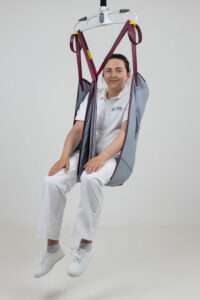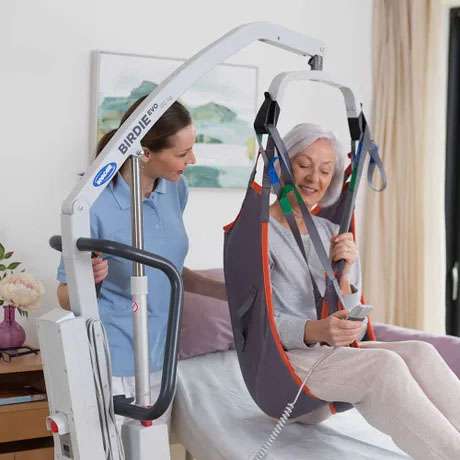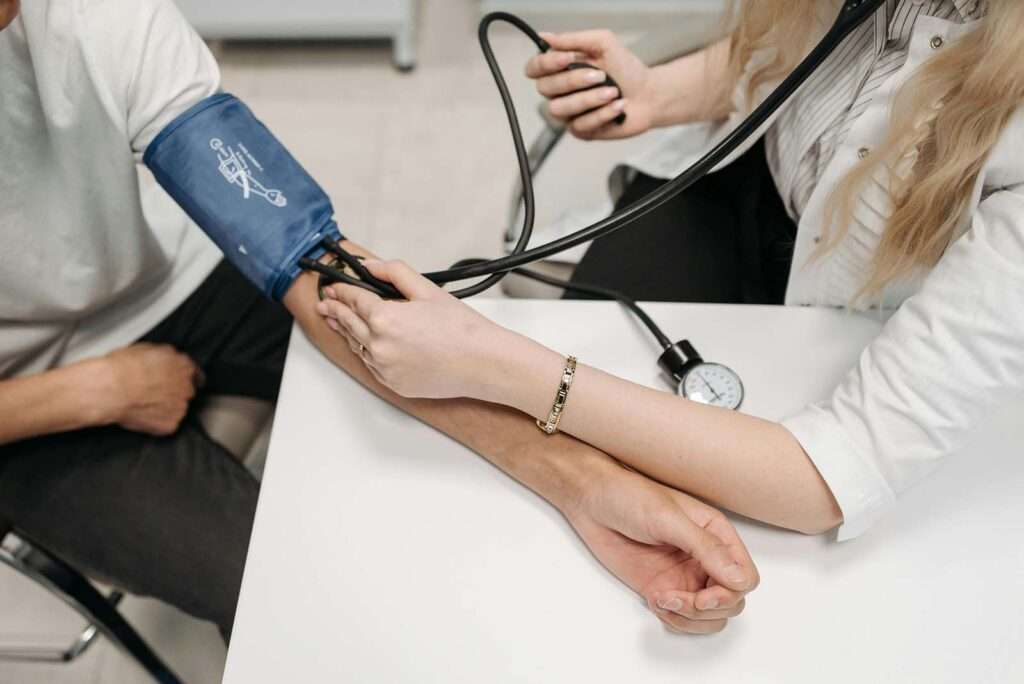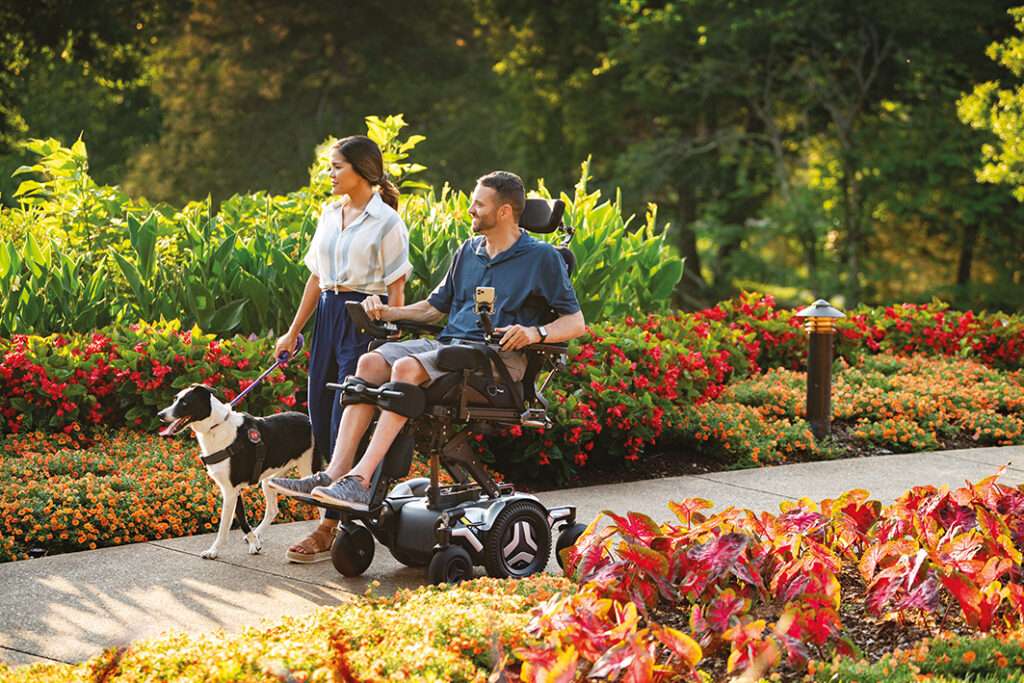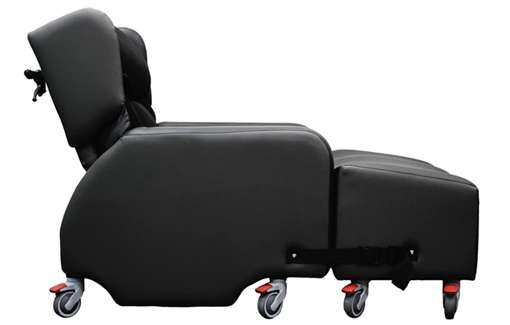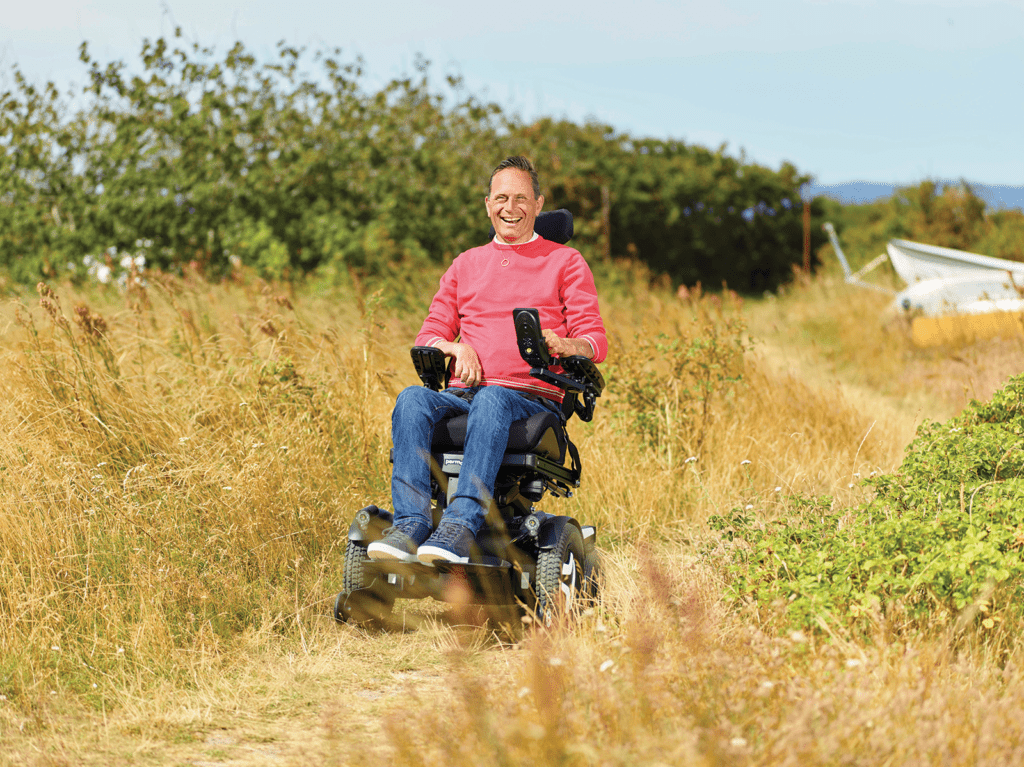If a client is hoisted, we generally recommend a care chair, as it is more practical to hoist in and out of.
Jump straight to...
Why are care chairs easier to hoist into than other chairs?
Care chairs are typically used for people who have less mobility and more complex needs. They have larger wheels so they can be moved around more easily.
The legs of a mobile hoist fit more easily underneath a care chair because the seat base is slightly higher.
If a client has to be hoisted in and out of a chair they will have less mobility and will likely spend more time seated. A care chair is designed for longer periods of sitting and immobility, with pressure relieving materials to all contact surfaces and more all-round body support.
As hoisting can be a time-consuming and sometimes uncomfortable process, the care chair is better suited as it is mobile, so can be easily transferred between locations on the same level and reduce the number of hoist transfers needed.
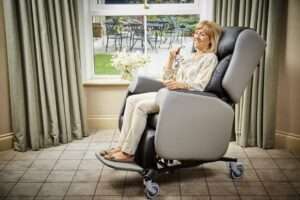
Using a Mobile Hoist to..
Hoist client out of a care chair
- Fitting the sling. The size of sling is important. As a rule of thumb, fold sling in half and bottom seam should come to end of spine and top seam to top of the head.
- Take off any tilt in space in the chair so the client is sitting upright. Place the sling behind the patient (the right way round!), and centralise it as best as possible.
- Facing the patient from the front of the chair, bring the leg pieces round to the side and pull the leg pieces forward to straighten.
- Bring the leg pieces under each leg and up through the middle. Ensure the sling looks symmetrical behind the patient.
- Insert the leg piece through the modesty strap so the patient’s legs are held together.
- Splay the legs of the hoist and approach the chair at a 45 degree angle.
- Using the handset lower the spreader bar into position.
- When attaching the loops to the spreader bar, as a general rule of thumb use the short loops on the trunk section and the longer loops on the leg section (short shoulders, long legs). This will hoist the patient in a sitting position so ideal for chair transfers. The patient should be assessed on an individual basis to determine the best transfer position for them.
- Raise the spreader bar and pause when the loops are taut to check everything looks OK and there are no tangled loops etc.
- Hoist the patient upwards out of the chair.
- The patient can be rotated in the sling and wheeled to the desired location for transfer.
Hoist client into a care chair
- Approach the chair from a 45 degree angle and position the patient over the chair.
- As the patient is lowered into the chair using the handset, guide their hips so that they are positioned all the way back in the chair.
- Unhook the loops from the spreader bar.
- Undo the leg sections so the leg pieces are hanging on either side of the hips.
- You can tilt the patient back in the chair slightly to assist while removing the sling, it should just slide upwards easily behind the patient.
We recommend the Lento Care Chair for people who are hoisted, it comes with removable armrests, electric or manual action, and fully adjustable seat sizing design to fit 80% of the population. Plus, we now have a hospital-spec Lento available with enhanced infection control features, and the Little Lento (for people under 5’ 2”), to cater for an even wider range of people!
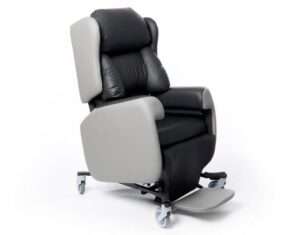
Lento Care Chair
Slings
As the size and type of sling is an important factor in hoisting, we have some more information to help you choose the most suitable sling for your hoisting needs.
Standard slings
Standard slings are ideal for general transfers and compatible with most mobile hoists. This type of sling is used in the step-by-step instructions above. They have padded leg sections and a smaller aperture. Different materials can be used for the contact surfaces, including parasilk in the leg sections to which is a smoother contact surface to reduce friction.
In-situ slings
As the name suggests, these slings can be kept in place underneath the patient while they are seated, due to their soft, breathable material. How long they should be left underneath the patient depends on the patient’s condition, and a risk assessment should be carried out to determine this. These make life easier for the patient and carer as the sling doesn’t have to be applied and removed each time.
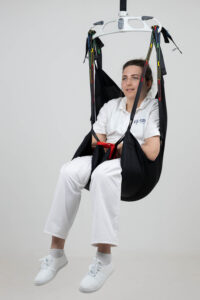
In-situ sling
Summary
We hope this guide helps you with hoisting patients in and out of a care chair and some of the functionality that is built into a care chair to assist this process.
We also sell patient hoists and slings, get in touch today to discuss your equipment needs using the contact form below, or speak to one of our friendly sales advisers on 01423 799960.




